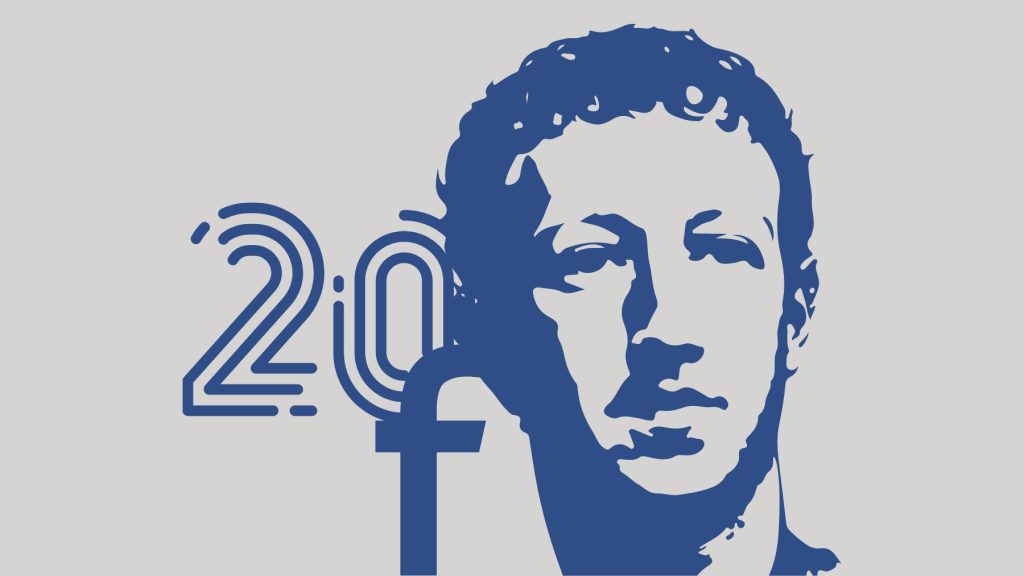Facebook Turns 20

It all began in Mark Zuckerberg’s Harvard dorm in 2004 on the 4th of February when he launched ‘thefacebook.com’. The Facebook 20 anniversary is here.
The journey began two decades ago, and many users find it hard to recall life before Facebook became one of the most prominent social media platforms in the world. Twenty years later, it feels like yesterday when we would poke our friends and family on the platform either to elicit a quicker reply from them or to get into what was known as the first ‘poke war’.
While it has enabled us to reconnect with long-lost friends and family and has been a boon for small businesses, its Facebook 20 year history has not been without controversy. Issues such as the Cambridge Analytica scandal, claims of election meddling, and a lack of safeguards against offensive content have marred its reputation.
This is the chronological timeline to examine what the last Facebook 20 years looked like for the company.
2004
Facebook, initially launched by Zuckerberg for students, was not intended for public use. Its design was focused on enabling the exchange of messages, posts, and the broadening of one’s network of ‘friends.’ The Facebook wall was created to allow friends to comment on published posts.
During the same year, Zuckerberg was accused of stealing the idea from his fellow Harvard colleagues, and the platform was supposedly to be named ConnectU. The legal dispute was settled in 2008 with an exchange of $65 million and shares in the company. By the end of that year, Facebook’s revenue had already reached millions.
2005
The feature to upload pictures on Facebook was introduced in 2005, allowing users the option to create photo albums. This development led to the concept of having a profile picture.
That year marked a period of significant changes for Facebook, including the decision to drop ‘the’ from its domain name, rebranding the site as Facebook.com. The cost for this change was $200,000 – a figure that was relatively minor compared to the revenue the company was generating.
2006
Facebook’s decision to go public occurred after the release of the iPhone smartphone, not a year before. It’s essential to clarify that Facebook’s initial public offering (IPO) took place in May 2012, several years after the iPhone’s introduction in 2007.
The detail regarding Facebook allowing people to join the platform with the condition of being 18 and above predates the IPO and is related to its policy changes as the platform expanded beyond educational institutions to a broader audience. This policy was part of Facebook’s efforts to manage its growing user base and ensure a degree of maturity and responsibility among its members.
2007
The fourth year of Facebook brought transformative changes that shaped its future, including the inclusion of video uploads, advertisements, the Marketplace, and the introduction of pages. These additions provided an enhanced marketing experience, expanding the platform’s utility for businesses and creators alike, and marked a pivotal expansion of Facebook’s features beyond simple social networking.
2008
The launch of the Facebook chat took place in Match 2008. The feature was embedded on the website. Until 2011 when the feature had an application created for it called Facebook messenger. During the same year iPhone users had a Facebook application that differed from using the website. That same year Facebook had the second data breach since its birth that targeted 80 million users on the platform.
2009
The introduction of the ‘like’ button on Facebook marked a development in social media interaction. However, this feature has also embedded certain negatives within the social media generation, leading to controversy. The issue lies in the fact that beauty and worth are often measured by the number of likes a picture or video receives, which can have real-life impacts on self-esteem and societal standards of beauty.
2010
When the platform reached 500 million users, there was a need for new features to keep the users engaged. This led to the creation of ‘groups,’ allowing users to form communities around shared interests.
2011
The complex relationship between Facebook and regulatory authorities began its journey around this time. The U.S. Federal Trade Commission (FTC) sued the platform for multiple data breaches. This raised significant privacy concerns among users. There was a sharing of information on the platform, and at that time, users were largely unaware of the potential harm this could cause.
2012 -2014
Facebook’s acquisition of Instagram occurred in 2012, and two years later, in 2014, it bought WhatsApp. These strategic moves were pivotal in the formation of what would later become Meta, although this was not publicly discussed at the time.
2021
The announcement that Facebook would rebrand as Meta was made by Mark Zuckerberg in 2021. This rebranding signified a shift towards building a more expansive digital ecosystem, often referred to as the metaverse.
2022
The initial UK coroner’s ruling in 2022 that “negative online content” had contributed to a suicide put Meta’s safeguards against harmful content under unparalleled scrutiny.
2023
During the second quarter of 2023, the number of monthly users on Facebook hit its peak. The number of users that Facebook had was 3.05 billion users a month. Towards the end of 2023, the Metaverse began costing Meta more than expected.
2024
In 2024 Meta has pledged to stop promoting content related to self-harm and eating disorders yet then again, they missed the fact to stop promoting child sexual content.
Inside Telecom provides you with an extensive list of content covering all aspects of the tech industry. Keep an eye on our Tech sections to stay informed and up-to-date with our daily articles.
